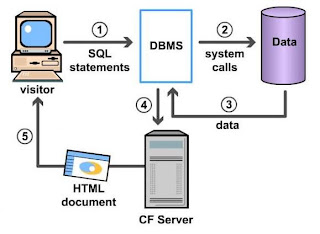There are various types of derivatives traded
on exchanges across the world. They range from the very simple to the most
complex products. The following are the three basic forms of derivatives, which
are the building blocks for many complex derivatives instruments (the latter are
beyond the scope of this book):
Knowledge of these instruments is necessary
in order to understand the basics of derivatives.
We shall now discuss each of them in detail.
Forwards
A forward contract or simply a forward is a
contract between two parties to buy or sell an asset at a certain future date
for a certain price that is pre-decided on the date of the contract. The future
date is referred to as expiry date and the pre-decided price is referred to as
Forward Price. It may be noted that Forwards are private contracts and their
terms are determined by the parties involved.
A forward is thus an agreement between two
parties in which one party, the buyer, enters into an agreement with the other
party, the seller that he would buy from the seller an underlying asset on the
expiry date at the forward price. Therefore, it is a commitment by both the
parties to engage in a transaction at a later date with the price set in
advance. This is different from a spot market contract, which involves
immediate payment and immediate transfer of asset. The party that agrees to buy
the asset on a future date is referred to as a long investor and is said to
have a long position. Similarly the party that agrees to sell the asset in a
future date is referred to as a short investor and is said to have a short
position. The price agreed upon is called the delivery price or the Forward
Price.
Forward contracts are traded only in Over the
Counter (OTC) market and not in stock exchanges. OTC market is a private market
where individuals/institutions can trade through negotiations on a one to one
basis.
Futures
Like a forward contract, a futures contract is
an agreement between two parties in which the buyer agrees to buy an underlying
asset from the seller, at a future date at a price that is agreed upon today.
However, unlike a forward contract, a futures contract is not a private transaction
but gets traded on a recognized stock exchange. In addition, a futures contract
is standardized by the exchange. All the terms, other than the price, are set
by the stock exchange (rather than by individual parties as in the case of a
forward contract). Also, both buyer and seller of the futures contracts are
protected against the counter party risk by an entity called the Clearing
Corporation. The Clearing Corporation provides this guarantee to ensure that
the buyer or the seller of a futures contract does not suffer as a result of
the counter party defaulting on its obligation. In case one of the parties
defaults, the Clearing Corporation steps in to fulfill the obligation of this
party, so that the other party does not suffer due to non-fulfillment of the
contract. To be able to guarantee the fulfillment of the obligations under the
contract, the Clearing Corporation holds an amount as a security from both the parties.
This amount is called the Margin money and can be in the form of cash or other financial
assets. Also, since the futures contracts are traded on the stock exchanges,
the parties have the flexibility of closing out the contract prior to the
maturity by squaring off the transactions in the market.
The basic flow of a transaction between three
parties, namely Buyer, Seller and Clearing Corporation is depicted in the
diagram below:
Options
Like forwards and futures, options are
derivative instruments that provide the opportunity to buy or sell an
underlying asset on a future date.
An option is a derivative contract between a
buyer and a seller, where one party (say First Party) gives to the other (say
Second Party) the right, but not the obligation, to buy from (or sell to) the
First Party the underlying asset on or before a specific day at an agreed-upon
price. In return for granting the option, the party granting the option
collects a payment from the other party. This payment collected is called the
“premium” or price of the option. The right to buy or sell is held by the
“option buyer” (also called the option holder); the party granting the right is
the “option seller” or “option writer”. Unlike forwards and futures contracts, options
require a cash payment (called the premium) upfront from the option buyer to
the option seller. This payment is called option premium or option price.
Options can be traded either on the stock exchange or in over the counter (OTC)
markets. Options traded on the exchanges are backed by the Clearing Corporation
thereby minimizing the risk arising due to default by the counter parties
involved. Options traded in the OTC market however are not backed by the
Clearing Corporation.
There are two types of options—call options
and put options

















